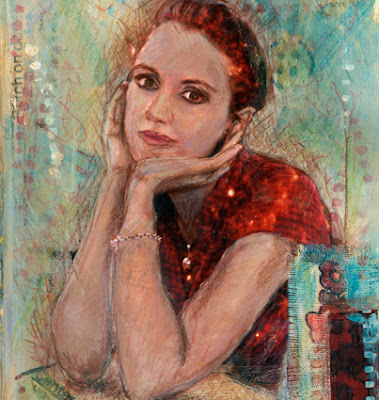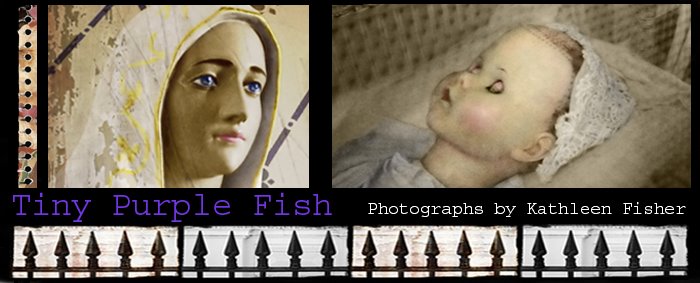
“Always be yourself” is the theme of chapter 16 in Dale Carnegie’s How to Stop Worrying and Start Living. There's more much more joy to be had in being you, he says than a second or third-rate imitation of someone else. Did you know the careers of Charlie Chaplin and Bob Hope were going nowhere until the stopped copying more famous comedians and let their own personalities twinkle through?
A self portrait was the obvious subject when I turned to this chapter in my altered book art journal. My techniques were inspired by Misty Mawn’s article “The Workshop: Using a Single Image to Explore Different Media” in issue 13 of Cloth Paper Scissors magazine. The background is a collage of sewing patterns, fabric and negatives, which are overlaid with acrylic paint and coloured pencils. You may recognise the portrait — it’s the photograph from my Friends, Family and Available Light entry back in June. I sanded it with an emery board and coated it with acrylic paint and coloured pencils.
Sanding photographs is my latest indulgence. Rough sanding creates white scrape marks, which are great for edges or parts of an image you want to fade into the background. Soft rubbing can give the impression of burned-in detail, create a vintage-style patina or, in prints from those black-and-white films that you process colour, add a rusted sepia tint.
A self portrait was the obvious subject when I turned to this chapter in my altered book art journal. My techniques were inspired by Misty Mawn’s article “The Workshop: Using a Single Image to Explore Different Media” in issue 13 of Cloth Paper Scissors magazine. The background is a collage of sewing patterns, fabric and negatives, which are overlaid with acrylic paint and coloured pencils. You may recognise the portrait — it’s the photograph from my Friends, Family and Available Light entry back in June. I sanded it with an emery board and coated it with acrylic paint and coloured pencils.
Sanding photographs is my latest indulgence. Rough sanding creates white scrape marks, which are great for edges or parts of an image you want to fade into the background. Soft rubbing can give the impression of burned-in detail, create a vintage-style patina or, in prints from those black-and-white films that you process colour, add a rusted sepia tint.

3 comments:
That looks so damn cool! Nice techniques you got there.
wow, that looks so amazing!!!
love everything you've done with the image. have you made the texture of your clothing look glossier, more silky? *goes to check own copy of photograph* yes, in the original you're wearing a striped t-shirt, but this looks more like a Chinese silk top or something...
Thanks for your comments guys. It really is a fun technique. Painting over a photograph takes the pressure off having to make a perfect drawing, which frees the creativity.
Kerriann, the silky effect on the top comes from sanding the photograph with an emery board. I'm using up a lot of emery boards, but I love the effect!
Post a Comment